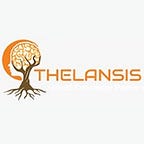T-cell Large Granular Lymphocyte Leukemia (T-LGL) — Market Outlook, Epidemiology, Competitive Landscape, and Market Forecast Report — 2021 To 2032
T-cell large granular lymphocyte leukemia (T-LGL) is a heterogeneous lymphoproliferative disorder of CD3-positive T cells. The median age of T-LGL diagnosis is 60, with an equal male-to-female ratio and an indolent clinical course. A positive rheumatoid factor is found in 60%, polyclonal hypergammaglobulinemia in 10–40%, and a positive Coombs test in 15% of patients. The diagnostic criteria for LGL include a persistent increase in circulating LGLs, confirmatory immunophenotype, and, ideally clonal T cell receptor (TCR) rearrangements. T-LGL leukemia has a mature T cell immunophenotype, with 80% of patients expressing CD3, CD8, and TCRab, but not CD4, and discrepant weak CD5 or CD7 expression. Rare variants may be CD4þ and CD8– or co-expression of CD4 and CD8. Large granular lymphocytes form part of the cellular immune response and produce tumor necrosis factor a and interferon g, leading to cell lysis of damaged cells, such as virally infected cells. Secondary to chronic activation of T cells by viral infection or autoantigen found in rheumatoid arthritis, leading to expansion of an unstable T-LGL population at risk of leukemogenic transformation and uncontrolled cytokine production.
· The incidence of LGL leukemia ranges from 0.2 to 0.5 cases per one million individuals. The median age at diagnosis is 66.5 years; females are likely to be diagnosed three years earlier compared with males.
Thelansis’s “T-cell Large Granular Lymphocyte Leukemia (T-LGL) Market Outlook, Epidemiology, Competitive Landscape, and Market Forecast Report — 2021 To 2032” covers disease overview, epidemiology, drug utilization, prescription share analysis, competitive landscape, clinical practice, regulatory landscape, patient share, market uptake, market forecast, and key market insights under the potential T-cell Large Granular Lymphocyte Leukemia (T-LGL) treatment modalities options for eight major markets (USA, Germany, France, Italy, Spain, UK, Japan, and China).
KOLs insights of T-cell Large Granular Lymphocyte Leukemia (T-LGL) across 8 MM market from the centre of Excellence/ Public/ Private hospitals participated in the study. Insights around current treatment landscape, epidemiology, clinical characteristics, future treatment paradigm, and Unmet needs.
T-cell Large Granular Lymphocyte Leukemia (T-LGL) Market Forecast Patient Based Forecast Model (MS. Excel Based Automated Dashboard), which Data Inputs with sourcing, Market Event, and Product Event, Country specific Forecast Model, Market uptake and patient share uptake, Attribute Analysis, Analog Analysis, Disease burden, and pricing scenario, Summary, and Insights.
Thelansis Competitive Intelligence (CI) practice has been established based on a deep understanding of the pharma/biotech business environment to provide an optimized support system to all levels of the decision-making process. It enables business leaders in forward-thinking and proactive decision-making. Thelansis supports scientific and commercial teams in seamless CI support by creating an AI/ ML-based technology-driven platform that manages the data flow from primary and secondary sources.
